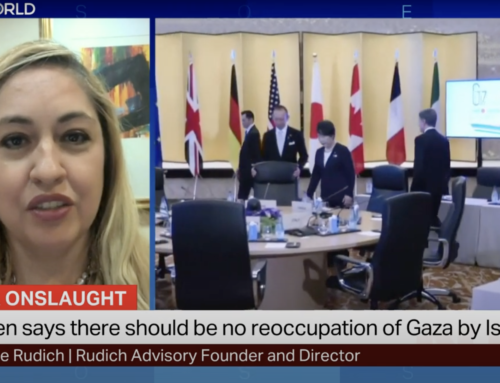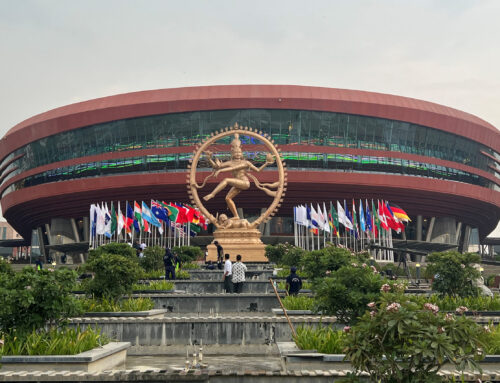G20 St. Petersburg Summit: Identifying Efficiencies in Financial Crime Prevention
At the G20 Summit in St Petersburg earlier this month, the leaders of the world’s largest economies took unprecedented steps toward tackling two areas of financial crime: tax evasion and corruption. The G20 did so by referencing the work carried out by the Financial Action Task Force (FATF) in the area of anti-money laundering (AML) and counter-terrorist financing (CTF), highlighting the need to build on an existing global framework which should decrease duplication of efforts and resource waste. As part of the Russian presidency’s theme of “growth through trust and transparency”, G20 leaders:
-
Endorsed the work carried out by the Organisation for Economic Cooperation and Development (OECD) on tax evasion and aggressive tax avoidance;
-
Committed to making beneficial ownership data available through central registers or other appropriate mechanisms; and
-
Endorsed the St Petersburg Strategic Framework and the work being carried out by the G20 Anti-Corruption Working Group (ACWG) to allow the G20 to “lead by example in the global fight against corruption”.
This article will look at financial crime-related G20 initiatives and will explore how firms can leverage existing AML and CTF programmes to manage upstream regulatory risk in the area of tax evasion and corruption.
Tax evasion and avoidance
As part of the fight against tax evasion and aggressive tax avoidance, the G20 committed to implementing an international global tax standard based on automatic exchange of information by February 2014 and called on all other jurisdictions to adopt the standard. This standard will be based on the Model 1 Intergovernmental Agreement (IGA) which has been developed to allow countries to comply with the U.S. Foreign Account Tax Compliance Act (FATCA). Under Model 1 IGA, foreign financial institutions (FFIs) are required to report certain information on U.S. persons to their local tax authorities, which in turn will send the information to the U.S. As this evolves into a worldwide standard, FFIs will, in theory, be required to capture and provide the same information for nationals of all countries that are party to the global tax standard.
From a practical perspective, this is about the availability of quality customer data, particularly beneficial ownership information. Beneficial ownership details should include information on the ownership and control structures (particularly for trusts and corporate nominees), name, date of birth, and place of residence and nationality of natural persons who are the ultimate beneficiaries of legal persons and arrangements.
The question remains, however, who will retain responsibility for reporting to national tax authorities where multiple majority shareholders are in different jurisdictions, and in what format. The OECD will be issuing a report in January 2014 which will look at due diligence requirements and include guidance about who should report what to which national tax authority. The OECD is also working on the development of common IT standards governing how customer data should be captured and plans to issue a report in June 2014.
What does this mean for financial institutions? At the moment, FATF Recommendation 5 indicates that firms should identify and take “reasonable measures” to verify the identity of beneficial owners on a risk-sensitive basis. Those organizations which do not already do so are strongly recommended to obtain full details of the shareholding and control structure from customers. Where possible, this should be documented and verified independently using existing customer due diligence processes.
Organograms are a good way to capture complex ownership structures as they provide a snapshot of who owns the company, and of percentage shareholdings, and make it easier to identify majority stakeholders in complex group structures. For higher-risk or complex ownership structures (four-plus tiers or via express trusts and corporate nominees or multiple offshore entities), it is worth identifying and documenting the rationale for the company set-up and where companies have consolidated accounts.
Many financial institutions are building these requirements into their customer due-diligence frameworks, although others have set up separate special FATCA compliance functions that are responsible for reporting tax data. Nevertheless, firms should review the OECD reports and conduct impact assessments so that they understand how this new due diligence and data integrity global standards are likely to affect their existing processes and procedures, IT systems and data feeds.
Firms looking to carry out non-urgent customer data cleansing projects might find it useful either to engage with the OECD to identify what common standard is being developed, or else to wait until the report is published on June 2014, to limit any rework. In the meantime, G20 governments should ensure that the OECD is working with the FATF and other partners in the industry to feed in current best practice around customer due diligence and existing customer data capture conventions.
Corruption
In addition to piggy-backing off the FATF’s work on beneficial ownership to tackle tax crimes, the G20 indicated that it would leverage existing AML/CTF measures developed by the FATF to fight corruption. The G20 further expressed support for the identification and monitoring of high-risk jurisdictions with strategic AML deficiencies. These countries often have poor governance and legislative frameworks, which increases the likelihood that bribery and corruption will take place within their borders.
The G20 endorsed the St Petersburg Strategic Framework to guide the work of the ACWG and to develop anti-corruption measures still further, including:
-
combatting foreign bribery and solicitation;
-
denial of entry and safe haven to corrupt officials;
-
strengthening whistleblower protection;
-
improving transparency in “vulnerable sectors” such as extractive industries, public procurement, privatization of state assets, construction, sporting, and major international events; and
-
developing education and training programmes to build a culture of intolerance towards corruption.
On the policy side, G20 countries and their partner organizations might find it useful to develop mechanisms whereby the names of corrupt officials who have been denied entry can be shared not only among themselves but also with relevant parties in the industry. This would allow financial institutions to identify bank accounts and assets held for these individuals and report proceeds of corruption via existing suspicious activity reporting mechanisms.
It might also be worth developing guidance regarding how the definition of “politically exposed persons” (PEPs) either addresses or differs from the definition of a “foreign official” for the customer or counterparty due diligence measures. Lastly, G20 countries should also consider developing and keeping up-to-date a central database of PEPs to make this data standardized and readily accessible to companies in both developed and developing countries; at the moment such databases are available only at a high cost.
As well as working with other international institutions, the G20 ACWG has been working in partnership with members of the business community and civil society via the B20 and C20 to promote anti-corruption compliance in the private sector. The G20 has agreed to support the development of a “Collective Action Hub” linking the business community to act as conduits for B20 anti-bribery and corruption efforts.
A starting point for the development of anti-bribery and corruption compliance is the development of anti-bribery and corruption risk assessments. Firms could build on existing financial crime or AML risk assessments to identify their exposure to the payment of bribes, inducements or solicitation fees by employees or third parties to obtain a business advantage. One area which firms might explore is enhancing existing customer risk assessment models, which dictate the level of due diligence to be undertaken, by looking at country, industry, counterparty, delivery channel and product/services risks using corruption indicators.
More specifically, in the area of country risk, firms could incorporate Transparency International’s Corruption Perceptions Index and Bribe Payers Index. For industry risk, firms could identify the main industries where government licences are required to operate. In the area of counterparty risk, firms could adapt existing customer due diligence procedures so that they could carry out counterparty due diligence on joint ventures, partnerships, consultants, agents or any other third party acting on the firm’s behalf. With regard to delivery channel risk, as part of the “know your business” process, firms could seek to understand how business is acquired and retained and whether payments for services are performance-related or not.
Given the plethora of regulatory change on the horizon, firms need to identify efficiencies. In the area of tax evasion and corruption, this can be achieved by building on what has already been set up to tackle AML/CTF. At a high level, this includes assessing how existing systems and controls can be enhanced by including more effective beneficial ownership data and bribery and corruption risk indicators and red flags. There is no need to re-invent the wheel.
Originally published on Thomson Reuters Accelus
Download “G20StPetersburg 26Sep2013.pdf”
G20StPetersburg_26Sep2013.pdf – Downloaded 862 times – 74 KB




